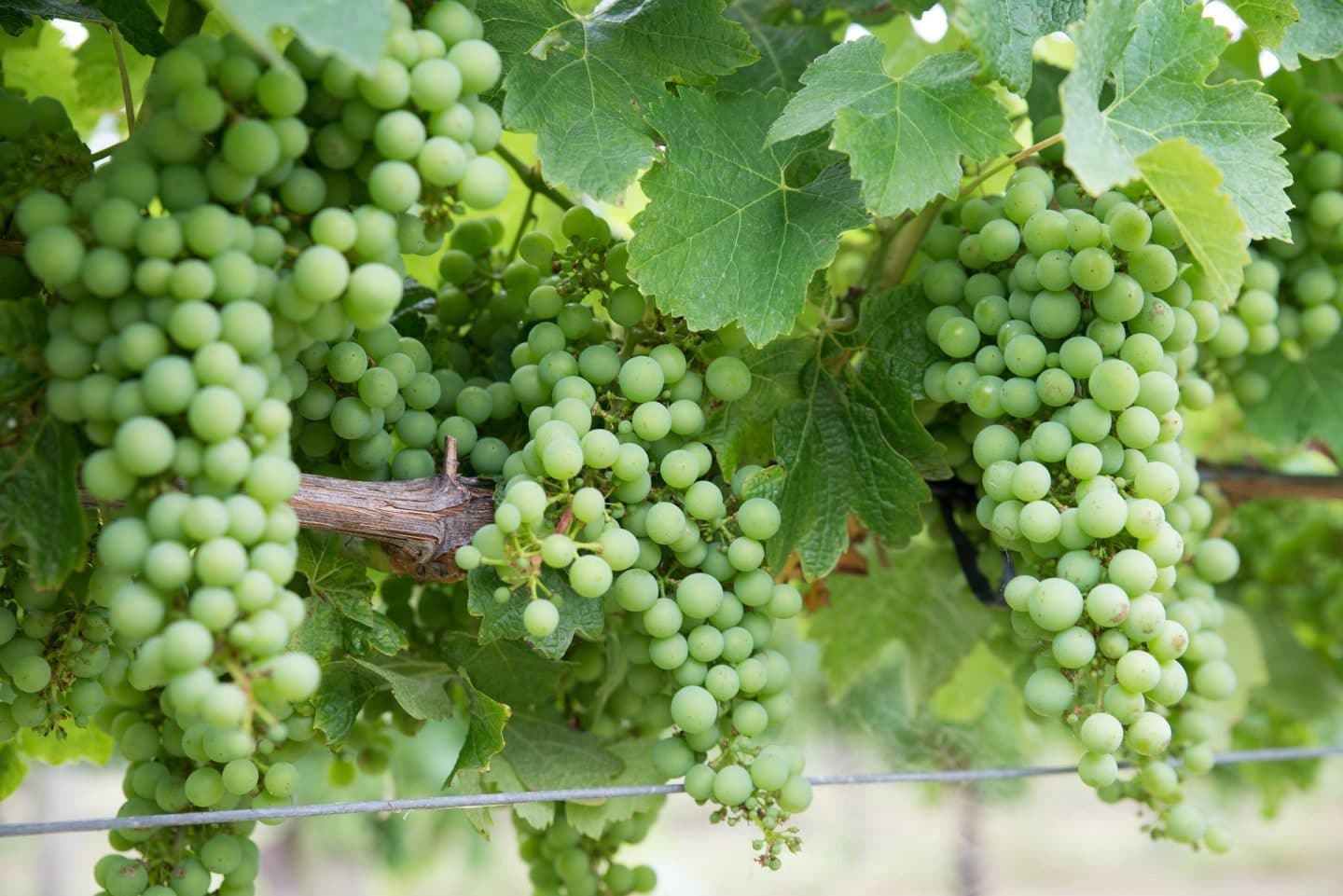
The most basic wine knowledge involves an understanding of a very limited set of what are called Noble Grapes or International Varietals.
These are the grapes that make the dominant proportion of fine wines around the world. This is partially because these grapes are hardy enough to grow in most wine climates and they happen to make some pretty excellent juice. Now, this set of 7 grapes is just scratching the surface of grapes used to make great wine. We could easily add another dozen popular grapes. Even at 20 grapes, realize that Italy alone has over 1000 indigenous grapes that are used to make wine, so it depends how far you want to extend your knowledge. For now, it’s going to be 7 grapes.
The Seven Noble Grapes are:
- Chardonnay
- Sauvignon Blanc
- Riesling
- Cabernet Sauvignon
- Pinot Noir
- Merlot
- Syrah
You’ve probably had wine made from each of these grapes and they exist in almost every significant wine growing country. What changes in a Chardonnay from France when compared to one from Napa? Well, it’s the growing conditions and the impact of the climate and the terroir (or the local expression of the earth). It can be great fun to try two bottles of exactly the same grape, but grown in different parts of the world to see the impact. This is one of the techniques Sommeliers use when blind tasting to determine where a grape was grown.
Let’s dig into each grape a bit more.
Chardonnay
Thin skinned grape, makes for relatively light wine. Nicely aromatic when grown in a warm climate, more austere when grown in a cool climate (like France)
You’ll find Chardonnay based wine from France (Chablis, Champagne, Burgundy), South America, Australia and California (Sonoma, Napa)
Sauvignon Blanc
Thin skinned grape with intense aromatics. The most distinct aromas are gooseberries and cut grass.
It is grown in France (Loire, Bordeaux), New Zealand, California, Italy, Chile and South Africa
Riesling
Intensely aromatic grape that has a lot of skin influence due to the small clusters.
We find Rieslings in Germany, France (Alsace), Italy, Austria, Australia, New York State and Canada. Many times, it is made into sweeter versions (although not always) by harvesting late in the season.
Cabernet Sauvignon
Thick skinned grapes, making an opaque wine. Intense flavors from the grapes and the typical oak aging.
You’ll find Cabernet Sauvignon in France (Bordeaux), Napa, Washington, Australia, Italy, Spain, South Africa and Chile.
Pinot Noir
Thin skinned grape makes for lightly colored wines. Has delicate flavors of non-fruit elements.
You’ll find this difficult to grow grape in France (Burgundy, Champagne), Oregon, California, New Zealand and Chile.
Merlot
Thick skinned grape, producing a deeply colored wine. Can be used alone or as a blending element with Cabernet Sauvignon, where it adds a softening and suppleness to the wine.
It is most popular in France (Bordeaux), Italy, California, Washington, Australia, South Africa and Chile.
Syrah:
Thick skinned grape, making intensely colored wines. Syrah or Shiraz (as they call it in Australia) has a range of expressions from elegant and refined with lots of non-fruit notes to fruit bombs with high alcohol.
We find Syrah in France (Northern Rhone), Australia, California (Paso Robles) and Washington State.
So, if you want to get a start on your wine knowledge, taste your way through these seven grapes form a variety of locations. You’ll probably find something new you like and get a better appreciation of the versatility of these amazing grapes.
Cheers!

